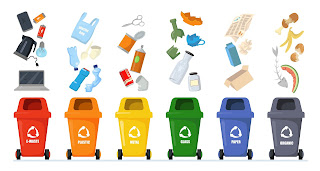Creative Upcycling Examples That Inspire Sustainable Living
In today’s fast-paced world, where convenience often trumps consciousness, upcycling has become a beacon for sustainable living. It’s more than a trend—it's a mindset shift. Upcycling involves creatively repurposing waste or unused items to give them a new function, often enhancing their value in the process. From household objects to industrial byproducts, the possibilities for upcycling are as endless as your imagination.
In this article, we’ll explore real-world upcycling examples that showcase the power of innovation and sustainability working together. Whether you're an individual looking to reduce waste or a company seeking greener alternatives, these stories are sure to spark ideas.
1. Upcycled Fashion: Wear the Change
Fashion is one of the most polluting industries in the world, but it's also where some of the most eye-catching upcycling examples are taking shape.
Popular Ideas:
-
Shirt-to-Skirt Transformations: An oversized shirt can be reimagined into a stylish skirt with just a few stitches and design tweaks.
-
Patchwork Denim: Scraps from worn jeans are being turned into jackets, handbags, and even sneakers.
-
Tie-Dye from Waste: Upcyclers use natural dyes from leftover food (like avocado pits or turmeric) to revive stained or faded clothes into wearable art.
This fusion of sustainability and creativity not only diverts textiles from landfills but also brings unique, personalized flair to fashion.
2. Furniture Makeovers: Function Meets Charm
Throwing out old furniture is easy—but transforming it into something fresh is where the magic happens.
Inspiring Examples:
-
Dresser to Bookshelf: Remove the drawers, add some decorative wallpaper or paint, and an old dresser becomes a charming new bookcase.
-
Bathtub Sofas: Believe it or not, cast-iron bathtubs can be sliced and padded to create vintage-style sofas—perfect for statement pieces.
-
Wood Pallets to Garden Furniture: Discarded pallets are often upcycled into patio seating, planters, or vertical gardens.
These furniture upcycles show how even the bulkiest waste items can get a second life with a little ingenuity.
3. Upcycling for Kids: Fun Projects With Purpose
Teaching sustainability from a young age is key—and kids love creative projects.
Family-Friendly Examples:
-
Bottle Rocket Launchers: Plastic soda bottles become water-powered rockets with a few household tools.
-
Toy Storage from Crates: Wooden or plastic crates are transformed into stackable, customizable toy organizers.
-
Egg Carton Critters: A classic classroom activity—cut, paint, and glue egg cartons into caterpillars, fish, or bugs.
These projects combine play, education, and environmental stewardship in one colorful package.
4. Upcycled Art: Beauty From the Unexpected
Artists around the globe are turning trash into treasure by reimagining waste as medium.
Striking Examples:
-
Plastic Bottle Installations: Thousands of used bottles are being converted into giant art pieces, often raising awareness about plastic pollution.
-
Scrap Metal Sculptures: Old tools, machine parts, and car pieces are welded into animals, abstract art, or even public monuments.
-
Canvas from Coffee Bags: Used burlap coffee sacks make great canvases for rustic-inspired art and décor.
These upcycling examples prove that sustainability can also be expressive and visually powerful.
5. Kitchen & Garden Hacks: Green Living at Home
Some of the most practical and rewarding upcycling examples are found in the kitchen and garden.
Practical Examples:
-
Tin Can Herb Gardens: Cleaned and painted tin cans make ideal containers for kitchen herbs or small succulents.
-
Glass Jar Storage: Repurposed jars can be used for storing grains, spices, and leftovers—cutting down on plastic containers.
-
Compost Bins from Buckets: Food-safe plastic buckets can be upcycled into small compost bins for apartments or balconies.
These functional projects help reduce waste at the source while supporting a more self-sufficient lifestyle.
6. Office and School Upcycling: Smart and Sustainable
Workplaces and schools generate a lot of waste, but with a creative approach, that waste can be turned into resources.
Examples Include:
-
Paper Waste to Notebooks: Used printer paper (with one blank side) can be spiral-bound into sketchpads or note journals.
-
Cardboard Desks for Kids: Large cardboard boxes are sometimes restructured into compact desks or activity stations.
-
Binder Clips as Cable Holders: Broken or old office supplies can find new purposes as cable organizers or phone stands.
These solutions not only save money but reinforce sustainable habits in professional and educational spaces.
7. Events & Festivals: Sustainable Celebrations
From weddings to festivals, events generate tons of waste—especially when it comes to signage, decorations, and swag.
Examples from Event Upcycling:
-
Banners into Bags: Event banners made from vinyl or mesh can be sewn into reusable bags, wallets, or laptop sleeves.
-
Decor from Wine Bottles: Cleaned bottles with string lights inside make great table centerpieces or hanging lanterns.
-
Lanyards into Keychains: Leftover event lanyards can be creatively converted into colorful keychains or badge holders.
These examples show how even single-use materials can be transformed into keepsakes or tools with extended life.
Upcycling at Scale: A Corporate Responsibility
While individual action is powerful, the biggest impact often comes when businesses embrace upcycling as part of their sustainability goals. Many brands accumulate excess promotional merchandise—shirts, hats, bags, mugs—that go unused after a campaign or event. When disposed of, these items contribute to landfill waste and lost investment.
That’s where companies like SwagCycle come in. SwagCycle specializes in responsibly managing the lifecycle of branded promotional products. They help businesses identify the best options to donate, recycle, or creatively repurpose excess swag. With a focus on practical, innovative upcycling examples, SwagCycle helps turn waste into opportunity—proving that sustainability and brand responsibility can go hand in hand.
From fashion to furniture, classrooms to corporate campaigns, the world is full of inspiring upcycling examples that show what’s possible when we rethink waste. Upcycling isn’t just about reducing environmental harm—it’s about creating new value, new stories, and a more thoughtful way of living. Whether you're repurposing old clothes at home or working with partners like SwagCycle, every upcycled item is a step toward a more sustainable future.





Comments
Post a Comment